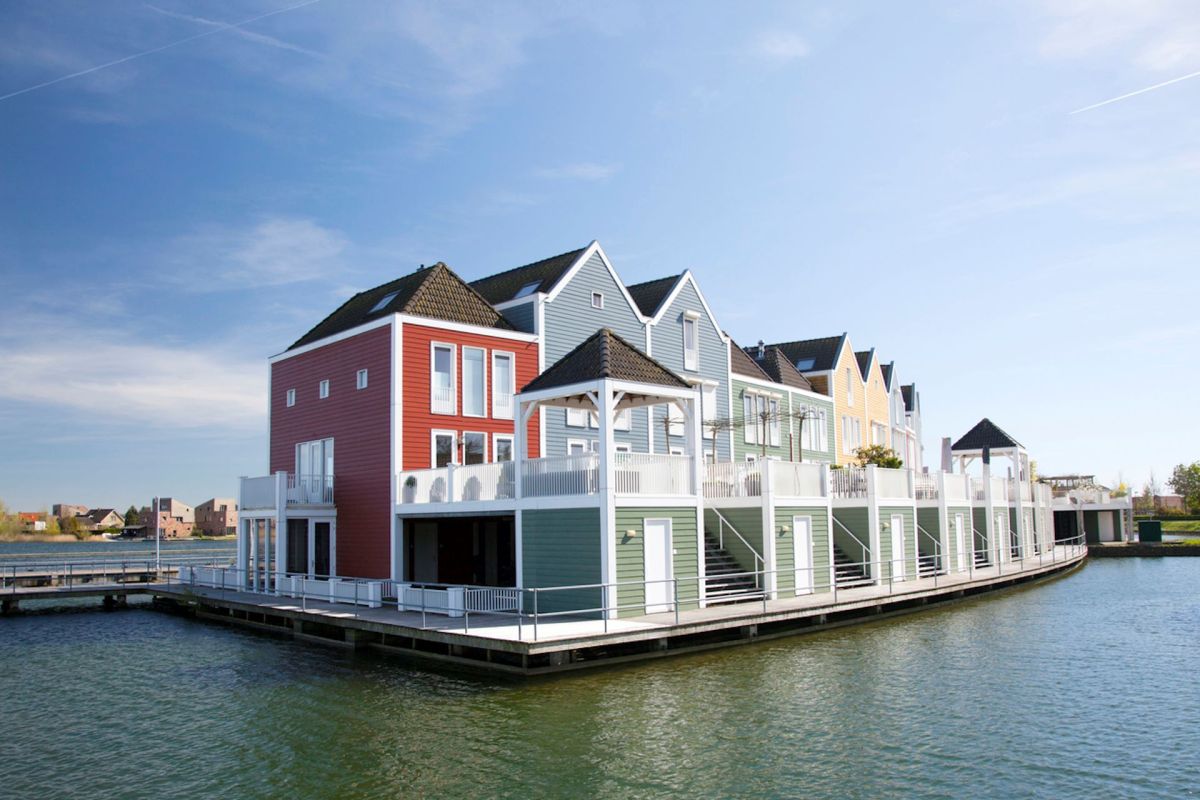While floating homes may sound like something only possible in the movie "Waterworld," some architectural firms are focused on the development of these buildings, viewing the challenges of flood protection due to rising sea levels as an opportunity.
Ronda Kaysen of The New York Times reported in late September that these innovative developers see the water as "a frontier for development."
The Netherlands, a third of which is located below sea level, has already experimented with floating buildings, including homes, offices, and even a dairy farm, that are able to move with the rising and falling currents.
"If it storms, you really feel it, and you see the land dancing," Maarten Remmers, a resident in a Schoonschip neighborhood of floating houses, told Kaysen.
"We want to change cities worldwide. We want to see how we can push the cities into the water," Dutch architect Koen Olthuis told Kaysen. "I hope that in 50 years time, we look back at our cities and say, 'Well, floating structures, they are just part of this city recipe."
Olthuis is also responsible for creating the master plan for a floating neighborhood in the Maldives, which is the lowest-lying country in the world, according to NASA.
According to National Geographic, sea levels — which have been rising primarily because of ocean warming and melting of ice such as glaciers and ice sheets — are expected to be a foot higher by 2050, raising concerns about the safety of the people who live near the water.
Roughly 40% of the population of the United States resides in a location where flooding and storms are affected by sea levels, according to the National Oceanic and Atmospheric Administration (NOAA), and the U.N. Atlas of Oceans noted eight of the 10 largest cities in the world are situated close to a coast, as reported by NOAA.
While more research needs to be done regarding any long-term negative effects of floating structures on the environment, one study in the Journal of Water & Climate Change showed that the buildings had some positive effects, such as attracting birds to nest.
These floating buildings could also be one way to help mitigate the risks of foundation damage from saltwater while avoiding the pitfalls that come with traditional flood-prevention techniques, all while providing the relaxing lifestyle by the water that so many enjoy.
"You wake up with birds and ducks next to your window, or swans," added Remmers, whose children are able to swim and fish in his neighborhood's canal.
"It feels like living at the beach, with the water, the saltiness of the air and the seagulls," fellow Schoonschip resident Marjan de Blok told The Washington Post in 2021.
Join our free newsletter for easy tips to save more, waste less, and help yourself while helping the planet.









